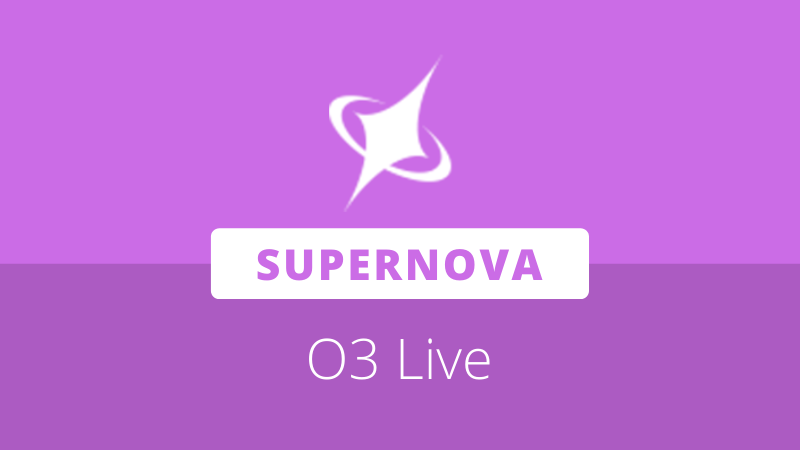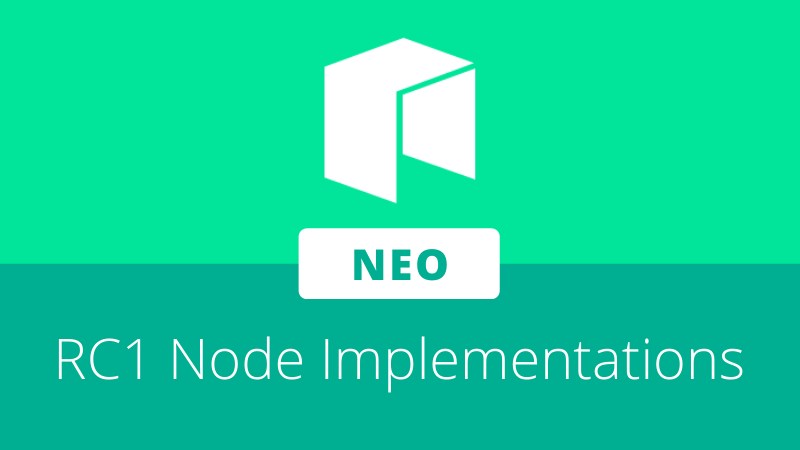
The O3 Labs team recently hosted SuperNova.Cash core community member, Kevin Wong, on an O3 Live AMA. In the AMA, Wong discussed:
- What makes the Supernova platform unique from other stablecoin platforms
- Integration of the sNEO planet, which accepts NEO, SWTH, and FLM for LP
- How Supernova can increase the utility of the NEO token in cross-chain DeFi applications
- The impending launch of an sFLM planet
- Plans for mortgage-free lending processes
- Plus more
SuperNova.Cash is a stablecoin platform that algorithmically pegs its synthetic assets to market prices of the tokens it supports. A recent strategic cooperation agreement with Poly Network allows NEO, SWTH, and FLM token holders to transfer assets and stake liquidity for sNEO rewards on the SuperNova.Cash platform
A transcript of the AMA can be found below:
Q1: What is SuperNova.Cash?
Kevin: SuperNova.Cash is an essential part of the experimental algorithmic stablecoin metaverse. Here are three perspectives infiltrating the importance of the experimental algorithmic stable coin.
First, SuperNova.Cash is built based on Ampleforth-EmptySetDollar and BasisCash. In Supernova, we use sFUND and SHARE-raising instead of a bond mechanism.
Second, algorithmic stablecoin will build multiple planets in HECO chain in SuperNova.For example, sCASH anchors the value of USD, sHT anchors the value of HT, sNEO anchors the value of NEO, sETH anchors the value of ETH, sBTC anchors the value of BTC. These planets are not isolated but coordinate through SHARE governance; users holding shares can obtain rewards from different algorithmic planets and bear the risk of equity dilution when part of the planet’s price is out of the anchor.
Third, Supernova’s metaverse worldview will link different algorithmic assets on other public chains in an efficient way that will increase asset liquidity and efficiency.
Q2: What is Supernova’s metaverse worldview? Can you give more details?
Kevin: I’ve found the most innovative and fascinating aspect of the Supernova project is the metaverse.
The metaverse that Supernova builds will spread across multiple public chains, such as Supernova Universe on HECO, Big Bang Universe on Binance Smart Chain, Pulsar Universe on Okexchain, E-Universe(name TBD) on Ethereum, and N Universe (name TBD) on N3.
These algorithms’ stablecoin assets will be unified by the realization of the cross-chain through Poly Network.
In a single universe, each algorithmic stablecoin is a planet, and the number of planets is determined by SHARE-DAO, so more assets will be introduced into this metaverse.
For example, Supernova Universe anchors sHT that anchor the value of HT; In Big Bang Universe sBNB an algorithmic stablecoin that anchors to the value of BNB. In Pulsar Universe sOKB an algorithmic stablecoin that anchors to the value of OKB, those assets will be used in different universes in the future. The algorithmic stablecoin assets that anchor OKB and OKT in the P universe can be used simultaneously in different universes in the future.
Furthermore, sNEO, an algorithmic stablecoin that anchors to the value of NEO, will also exist in the five universes mentioned above and can be transferred cross-chain.
During the cross-chain, except for the gas fee needed to pay to Poly Network, a cosmic tax based on the actual liquidity difference in the universe needed to be paid. The part of the tax will be donated to public chain developers, and the rest will be used for SHARE-DAO governance rewards.
Q3: Alongside multiple universes, application scenarios, and mortgage-free lending, what else does Supernova.Cash envision using universes. Are there any plans?
Kevin: We are currently developing contracts and debugging. In the Supernova universe, except for the five main stars (sCASH/sHT/sNEO/sETH/sBTC), the opening of other planets is based on the precondition of s-assets as Swap’s retransmission. For example, if we open sDOT planet, the liquidity of sDOT/sCASH needs to reach one million dollars.
The sFLM planet needs pFLM/sNEO liquidity of US $500,000. At this point, sCASH and sNEO have become trading relays for non-custodial exchanges.
The mortgage lending function will activate after the circulation of sCASH reaches 2.1 million. Though, mortgage-free lending is preparing and working right now.
Finally, the plan for NFT and other dApp will launch when the circulation of sCASH reaches 50 million.
Q4: Supernova needs a lot of liquidity before you can interact with other non-custodial exchanges?
Kevin: At present, we are cooperating with the three major lending platforms on Huobi ECO Chain. They are FiLDA, Channels, and Lendhub, which utilize the Huobi ECO Chain as a fulcrum to leverage mortgage lending of the whole algorithmic stablecoin.
Many assets that the mainstream lending platform has not accepted can be circuitously entered into the mortgage lending field through algorithmic stablecoin.
Yes, we need a lot of liquidity.
Q5: What’s the role of stablecoin sNEO, which anchors NEO value? Can you explain how users can use the O3 wallet to link to Supernova?
Kevin: In the Supernova universe, sNEO, which anchors the value of NEO, will further activate the value of NEO.
At present, NEO can be transferred to Huobi ECO Chain through the Poly Network cross-chain bridge, lending BTC and ETH through the FiLDA platform, and participating in various high-yield leading mining activities on Huobi ECO Chain.
With the SuperNova multiverse, sNEO assets will allow you to travel between universes and participate in various DeFi leading mining projects. It also increases the compound utilization of assets.
The SWAP/NFT/dApp applications will further broaden the needs and application scenarios of sNEO, and show more possibilities for the algorithm-based stablecoin universe on N3.
Q6: Why do we need an algorithmic stablecoin?
Kevin: The number of assets onchain is growing recently, and the institutions issuing stablecoin are more and more likely to incur regulatory troubles. Assets can be the medium of value storage and transfer. Using algorithms to stabilize the price of these assets can also realize value storage and transfer.
First, we will build a set of lending networks within the algorithmic stablecoin. The overall risk of this network is adjusted by the mechanism of the algorithm stablecoin itself. When assets flood in, the algorithm stablecoin is issued and enters the credit expansion cycle. When assets withdraw, the algorithm stabilizes currency deflation and enters the credit reduction cycle.
Although the algorithmic stablecoin itself has the risk of large fluctuations, the algorithmic adjustment mechanism will bring more beneficial changes, allowing more assets to enjoy the DeFi dividend rather than being a spectator.
Second, it’s about the last piece of the puzzle in the DeFi world — unsecured lending, which fits better with algorithmic stablecoins. Supernova has done a lot of brainstorming and designing in this area.
Q7: Can you share more about the sFLM planet that has not been unlocked yet?
Kevin: sFLM planet will release approximately 2,500 SHARE’s, so we need an equivalent of roughly US $500,000 in pFLM/sNEO liquidity to unlock the planet.
If you are interested in learning more about algorithmic stablecoins, users can join the sNEO planet and learn the expansion rules. Then, users can provide the liquidity of the pFLM/sNEO pair on MDEX.com and staking LP tokens to mine sFLM tokens.
After liquidity reaches an equivalent of $500,000, the second stage of sFLM will begin shortly afterward. In that stage, users can stake pNEO, pFLM, or pSWTH to join the genesis mining and even provide sFLM/pFLM SHARE/pFLM to mine SHARE tokens.
I believe the sFLM planet will unlock in approximately two weeks once pFLM and pNEO’s liquidity meets the Huobi ECO Chain’s minimum threshold. Once minimum liquidity requirements are met, the sFLM planet will unlock.
Q8: You mentioned Poly Network and cross-chain interoperability. Could you introduce how the economic model of cross-chain assets is unified?
Kevin: On SuperNova.Cash, any algorithmic stable coin of the same type, will anchor the same asset. So, there are no barriers to transfer s-series assets by Poly Network.
At the same time, three s-series assets connect many assets on different chains such as stablecoins like HUSD on Huobi ECO Chain, DAI on Ethereum, BUSD on Binance, and so on. We gave this transfer mode a special name, Wormhole.
The full AMA can be found at the link below:
https://t.me/O3Community/29544







About The Author: Dylan Grabowski
Dylan is a reformed urban planner with a passion for covering the Neo ecosystem. His objective as a writer for Neo News Today is to report news in an objective, fact-based, non-sensational manner. When not behind a computer screen, he can be found in the mountains rock climbing. Find Dylan on Twitter (@GrabowskiDylan).
More posts by Dylan Grabowski